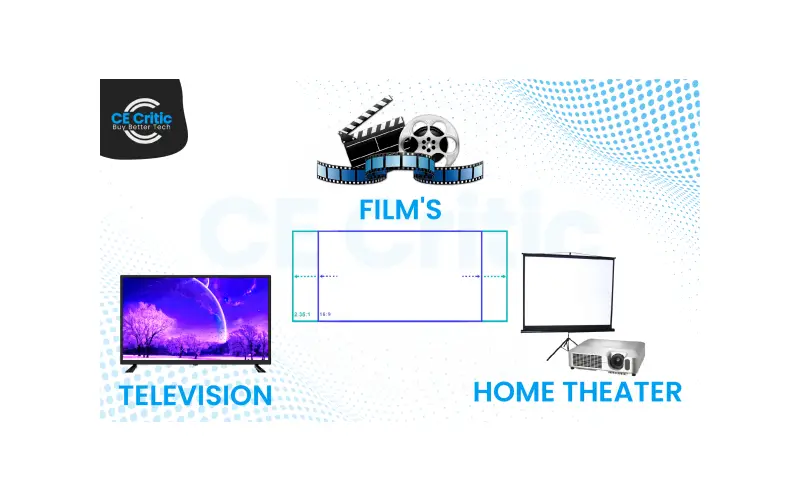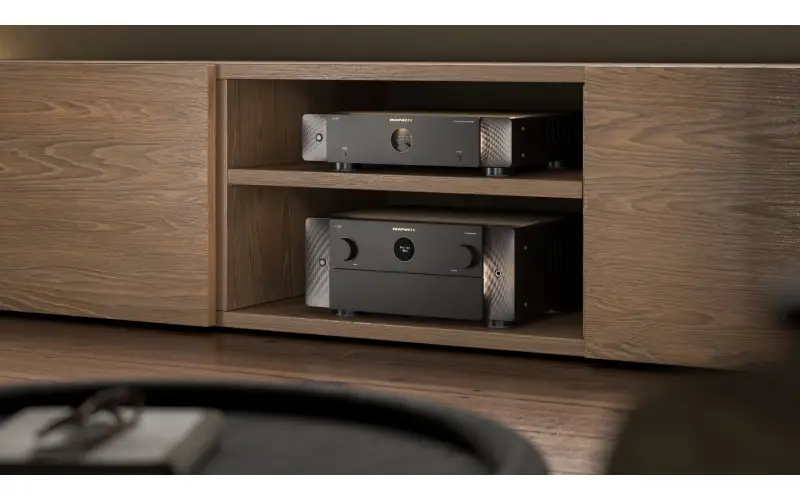By CE Critic - Buy Better Tech
Table of Contents
-
Introduction: A Cinematic Odyssey
-
A Brief History of Aspect Ratios: From Squares to Scopes
-
The Modern Landscape: A Feast of Aspect Ratio
-
Choosing the Perfect Ratio: A Matter of Preference
-
Beyond the Ratio: Additional Considerations
-
IMAX: Your Ticket to Blockbuster Brilliance
-
Conclusion: Cinematic Bliss Awaits
Welcome, cinephiles and home theater enthusiasts! Your journey to the perfect home theater setup is almost complete, but one crucial decision remains: the aspect ratio of your screen. This seemingly technical detail can make a world of difference in your viewing experience, transporting you to the heart of the action or leaving you feeling frustrated by black bars. Fear not, for this guide will equip you with the knowledge to navigate the world of aspect ratios and choose the one that seamlessly complements your cinematic dreams.
A Brief History of Aspect Ratios: From Squares to Scopes
Aspect ratios weren't always a complex topic. The early days of cinema saw the square 1:1 ratio reign supreme, mirroring the silent film era's focus on close-ups and static compositions. As sound and widescreen technologies emerged, rectangles took over, with the 4:3 ratio becoming the standard for decades. Remember those old televisions? Those were 4:3.
But Hollywood wouldn't be Hollywood without pushing boundaries. The 1950s saw the birth of wider formats like Cinemascope (2.35:1) and Cinerama (2.66:1), immersing audiences in sprawling landscapes and epic action sequences. These "widescreen" formats sacrificed some screen height for a panoramic view, becoming the gold standard for theatrical releases.
Meanwhile, television stuck to its 4:3 roots until the 1980s, when the 16:9 ratio began to gain traction. This wider format better accommodated emerging broadcast technologies and eventually became the dominant aspect ratio for HDTVs and streaming services.
The Modern Landscape: A Feast of Aspect Ratios
Today, the home theater enthusiast has a smorgasbord of aspect ratios to choose from. Here's a breakdown of the most common ones:
-
16:9 (1.78:1): The king of versatility, 16:9 perfectly fits HDTV content and most streaming services. It's also a good compromise for watching widescreen movies, with minimal black bars on the top and bottom.
-
2.35:1 (Cinemascope): The ultimate movie buff's choice, 2.35:1 delivers a truly cinematic experience, showcasing widescreen films without compromise. However, be prepared for black bars when watching TV shows or other 16:9 content.
-
2.40:1 (Ultra Panavision): An even wider format than Cinemascope, 2.40:1 is reserved for specific Hollywood blockbusters and offers an incredibly immersive viewing experience. But be warned, black bars become even more prominent with 16:9 content on this ratio.
-
1.85:1 (Flat Widescreen): A popular choice for home theaters seeking a balance between 16:9 and 2.35:1, 1.85:1 fills the screen nicely with most widescreen movies while leaving slightly smaller black bars than 2.35:1.
Choosing the Perfect Ratio: A Matter of Preference
So, which aspect ratio is right for you? It all boils down to your viewing habits and priorities:
-
TV Show Enthusiast: If you primarily watch TV shows and streaming services, stick with 16:9. It's the most compatible format and ensures you won't be bothered by black bars.
-
Movie Buff: For the dedicated cinephile, 2.35:1 or 2.40:1 might be tempting. However, be prepared for black bars with non-widescreen content and potentially limited screen sizes due to the wider format. Consider 1.85:1 as a compromise.
-
Variety Viewer: If you enjoy a mix of movies and TV shows, 16:9 remains the most versatile option. However, if you have the space and budget, a projector and a retractable 2.35:1 screen can offer the best of both worlds.
IMAX: Your Ticket to Blockbuster Brilliance
Born from a desire to push the boundaries of film presentation, IMAX boasts a unique 1.43:1 aspect ratio. This towering format fills your peripheral vision, creating a sense of being enveloped by the on-screen action. Think soaring superhero flights, heart-pounding car chases, and breathtaking natural landscapes – all unfolding in a spectacle beyond your wildest home theater dreams.
But IMAX isn't just about the screen. The entire experience is meticulously crafted to transport you to the heart of the story. Crystal-clear laser projection, booming 12-channel surround sound, and custom-designed theaters with stadium seating all conspire to create a truly immersive environment.
Is IMAX Right for You?
While the allure of IMAX is undeniable, it's important to consider its specificities before diving in:
- Content: Not all movies are released in IMAX format. While blockbusters often get the IMAX treatment, smaller films and independent productions might not.
- Cost: IMAX tickets are typically more expensive than standard movie theater tickets.
- Availability: IMAX theaters are less common than regular cinemas, so you might need to travel farther to experience the format.
IMAX at Home: A Dream or Reality?
While replicating the full IMAX experience in your home theater might be a tall order, there are ways to capture a taste of its magic:
- Projector and ultra-wide screen: Invest in a high-quality projector and a 2.35:1 or even 2.40:1 screen to create a wider-than-widescreen viewing experience.
- Surround sound system: Immerse yourself in the soundscape with a powerful surround sound system.
- Dim the lights and control distractions: Eliminate ambient light and distractions to maximize your focus on the film.
Remember, even with a smaller setup, the key to enjoying IMAX at home is to prioritize creating a dedicated viewing space that allows you to fully immerse yourself in the on-screen world.
Beyond the Ratio: Additional Considerations
Remember, aspect ratio is just one piece of the puzzle. When making your decision, also factor in:
- Screen size: A larger screen can better accommodate wider aspect ratios without feeling cramped.
- Viewing distance: The further you sit from the screen, the less noticeable black bars become.
- Personal preference: Ultimately, the best aspect ratio is the one that brings you the most enjoyment. Don't be afraid to experiment and find what feels right for you.
So, whether you're a die-hard IMAX enthusiast or simply curious about this larger-than-life format, remember that the choice is ultimately yours. Embrace the cinematic possibilities and create a home theater experience that transports you to the heart of the silver screen, no matter the aspect ratio.





